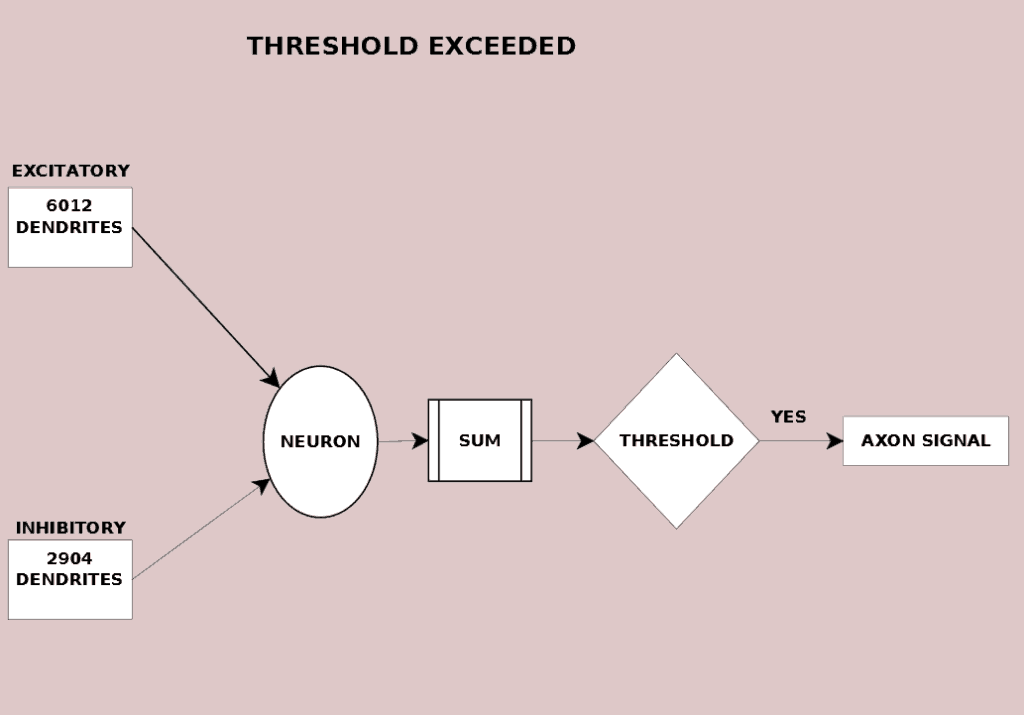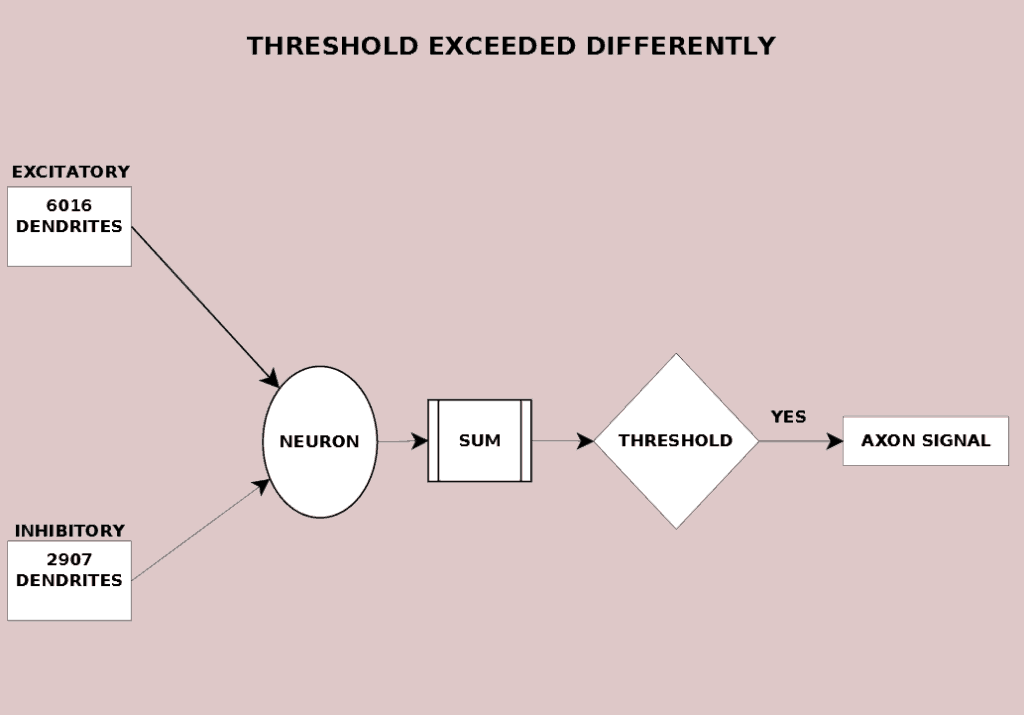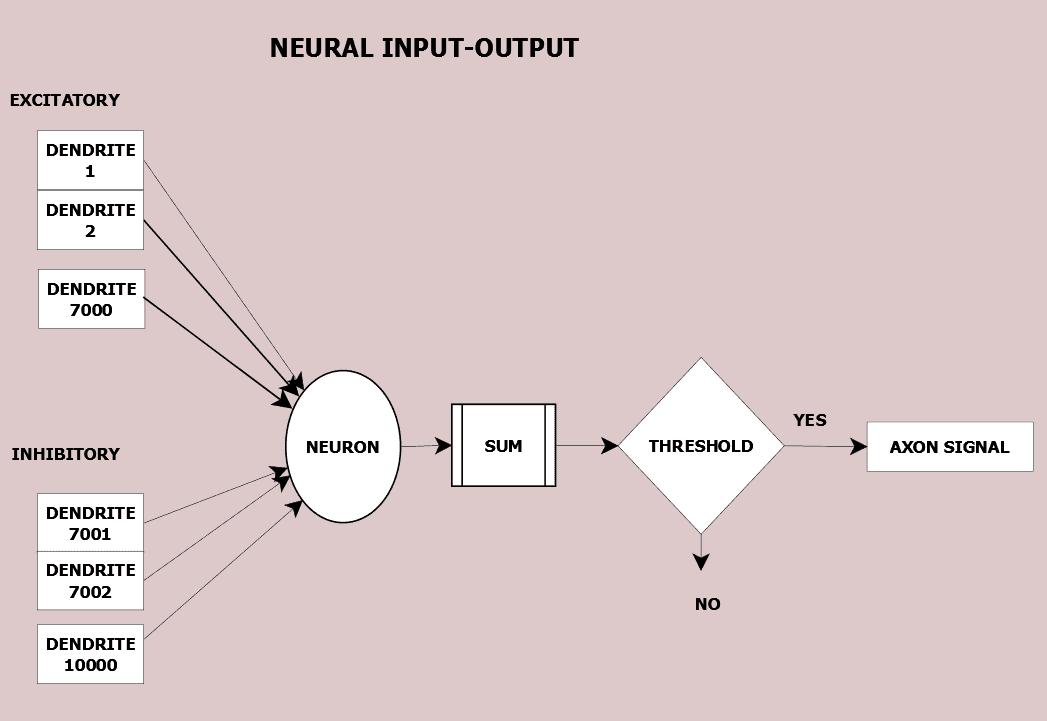Two inputs, nearly the same, are treated as identical if they both exceed the neural threshold, triggering its output downstream.
These matches can be called Almost Gates. They are a feature of the standard operation of neurons. Almost Gates are the source of the abstraction we routinely utilized in which we focus on only specific features of a situation.
Any two sets of inputs, which exceed the neural threshold, send the same signal to all neurons downstream of it. Think of that–different sensations will be treated as the same. Since input detail in excess of that need to fire the neuron is not communicated downstream, abstraction automatically occurs.
It’s not to be overlooked that the Almost Gate is not restricted to sensory handling. Uniform cortical structure shows that the Almost Gate operates again and again as information and memories work their way up to the executive functions in the prefrontal lobe.
Two Biological Properties
The primary key to functioning of the Almost Gate comes from the interplay of two basic neural properties.
- Each neuron has an electrical threshold. When the neural body receives electrical inputs, that when summed exceeds its threshold, the neuron sends its signal down its axon to all receiving neurons.
- The All-or-None principle. When the neuron fires, it always fires the same signal. There is no gradation of electrical signal. It’s a full signal or there is no signal.
Input Sets
For simplicity, this discussion assumes all inputs have the same weighting across the synaptic gaps. That simplification does not affect the logic below, only the true values that would need to be considered in an experimental measurement.
The two properties of the neural threshold and the All-Or-None firing imply that a neuron fires with the same output under different inputs. Consider a neuron which is connected through 10 thousand input dendrites. With the cortical neuron electrical charge exceeds 85 mV (millivolts), it fires, sending its signal to the 10 thousand neurons it is connected to.
In Figure 20.1 the threshold is exceeded by 6012 excitatory and 2902 inhibitory inputs. The receiving neuron sends its output signal down the axon to the thousands of neurons it is connected to.

As you can well imagine, these particular 6012 excitatory and 2904 inhibitory inputs are not the only combinations of inputs that cause the neuron’s threshold to be exceeded. There are a vast multitude of combinations which can cause the neuron to fire. For concreteness, consider Figure 20.2. A different of input dendrites send 6016 excitatory and 2907 inhibitory inputs into the neuron. A different set of inputs result in the same signal down the axon to the next stage of neural processing.

In this way, the neuron’s threshold and its all-or-none signaling results in almost matches being treated equally downstream in the brain. The Almost Gate lets similarly impactful inputs over its barrier. Inputs closely related in impact are treated as equals.
Hebb’s Law
It might occur to you that rather than almost equal inputs, wildly divergent input signals could cause the neuron to fire. That is true; however Hebb’s Law, which deals with layers of neurons rather than single neurons comes into play. The Almost Gate truncates (abstracts) information, but it requires more that one neuron to put the information into patterns.
Pattern detection requires an assembly of neurons and Hebb’s Law. Hebb’s Law (neurons that fire together will fire together more easily in the future) clusters inputs to trigger the same neurons in the future. This results in input categorization, a further abstraction of raw input.